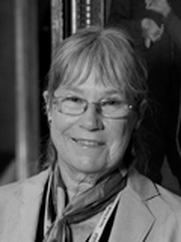An Invaluable Tudor PortraitPortraits of non-noble sitters in Tudor Britain are very rare, because this new form of visual art in the sixteenth century was aimed at sustaining the fame and power of high-status individuals. Lesser folk might have pictorial images in woodcuts or manuscript illustrations, but these were often crude and typically generic representations, not recognisable figures. The Black trumpeter in the 1511 Tournament Roll is therefore amazing on many levels.
As the earliest depiction of an individual of African ancestry in British pictorial culture it demonstrates how in recognition of his unique or at least special qualities he literally stood out from his fellow trumpeters, shown as a team of look-alikes in the yellow and grey livery worn by all attendants in the procession. They are bareheaded, too, whereas he wears a turban, which indicates the personal appearance of a known individual, just like the dark skin carefully delineated alongside dozens of white faced figures. As it happens, the Roll’s illuminator forgot to colour in his visible right hand holding the trumpet, which remains as pale as the others’. This is more of a ‘thumbnail’ image than a carefully observed portrait in the classic manner exemplified by Holbein’s drawings of Tudor courtiers, but it is a likeness which contemporaries would recognise, of a known figure in the musical retinue. Even more remarkably, it has proved possible to name this exceptional musician using Court records. Or at least find the name given to him at the courts of Henries VII and VIII. It’s too bad there is no surviving record of his real, or original name, which might have pointed to a country or region of birth. ‘John Blanke’ has the hallmark of official convenience, although one wonders whether it derives from a functionary entering the name of ‘John Black’, a common way of registering dark-skinned foreigners, or from ‘John -----’, a literal blank line in the absence of a familiar cognomen. One can assume he came as an immigrant to England, presumably in the entourage of Katherine or Catalina of Aragon when she arrived to marry Arthur Tudor in 1501. Following Arthur’s death, she married Henry VIII in 1509, and the Westminster Tournament was held to mark the birth of their son, who sadly died within six weeks. Katherine’s later life was no happier, but John Blanke evidently throve as a court musician, and may well have had numerous British descendants. Tudor portraiture also flourished, on a rather grander scale than this tiny image – tiny, but invaluable as both portrait and history. Jan Marsh National Portrait Gallery |
| The John Blanke Project | jan marsh |
